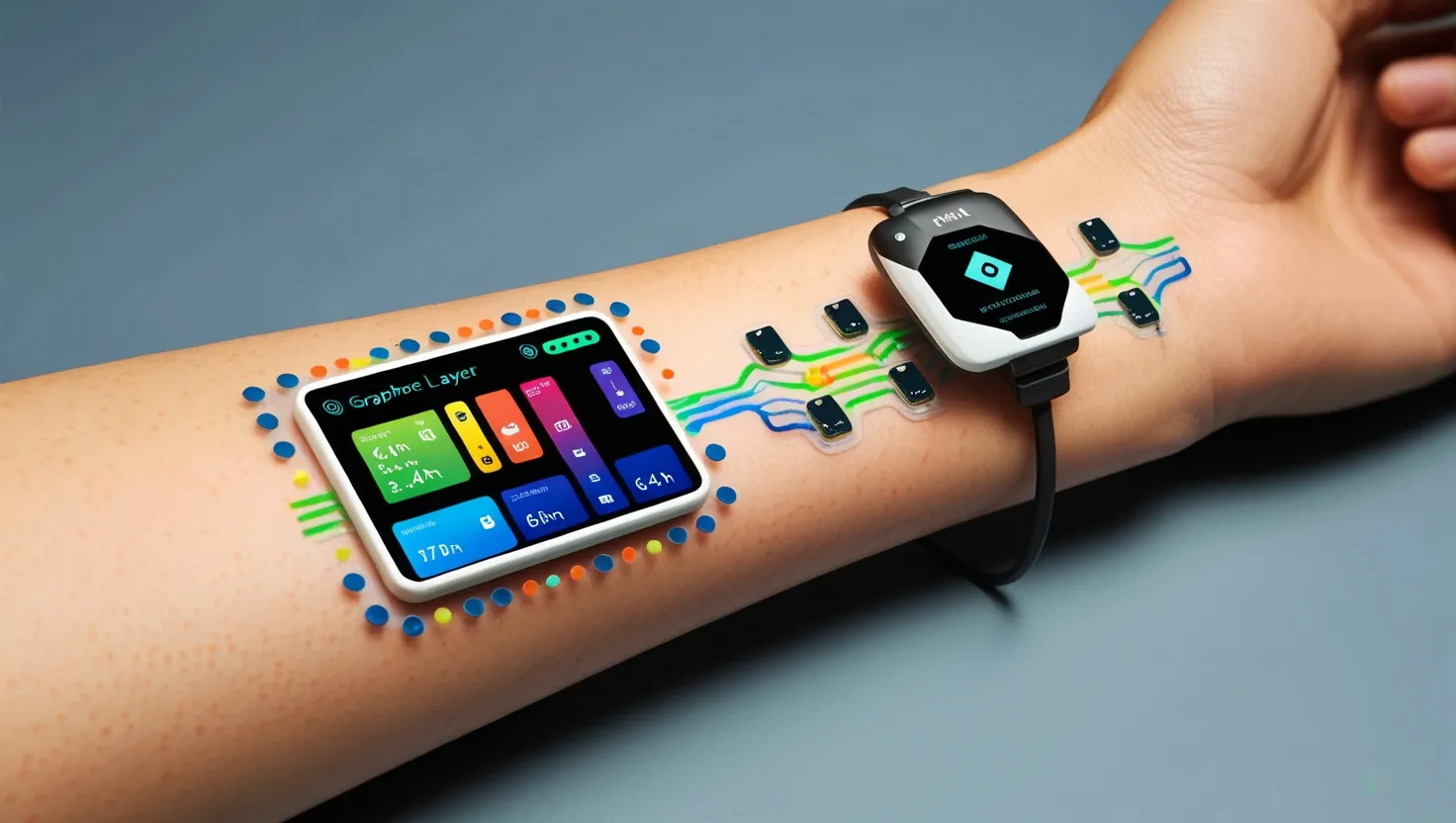In the realm of healthcare and technology, a fascinating fusion is taking place – the emergence of bioelectric tattoos that blend health monitoring, drug delivery, and even human-machine interfaces. These temporary tattoos, often referred to as electronic tattoos or e-tattoos, are revolutionizing how we approach personal health tracking and medical treatment.
Imagine wearing a tattoo that is not just a piece of art, but a sophisticated device that monitors your vital signs, including blood pressure, heart rate, and even brain activity. This is no longer the realm of science fiction; it is a reality that researchers from institutions like Texas A&M University and the University of Texas at Austin are bringing to life.
One of the most intriguing aspects of these e-tattoos is their material composition. Made from graphene, a highly durable and ultra-thin material, these tattoos are applied to the skin much like any temporary tattoo. Graphene, with its exceptional electrical properties, allows these tattoos to be incredibly thin and flexible, making them comfortable to wear and virtually imperceptible.
How They Work
The process of using an e-tattoo involves placing a small sensor on the arm, just above the graphene application. This sensor introduces a weak electric current into the skin, prompting a reaction that allows the device to measure changes in the volume of the arteries, thereby gauging blood pressure. This method, known as bioelectric impedance analysis, is linked to a computer that uses machine-learning algorithms to analyze the data and provide accurate biometric readings.
For instance, the e-tattoo developed by Dr. Deji Akinwande and his team is designed to monitor blood pressure continuously, a vital sign that is crucial for health but challenging to measure accurately outside of a clinical setting without a cuff. This technology has the potential to create a digital twin of the human body, predicting how it might respond to various treatments over time.
Advancements and Improvements
Recent advancements have addressed some of the initial limitations of these e-tattoos. Earlier versions suffered from issues such as impermeability to sweat and variability in electrical properties due to growth or transfer discrepancies. However, the latest iterations, dubbed “GETs 2.0,” have significantly improved performance, breathability, and robustness.
These enhanced e-tattoos use multilayered graphene structures, such as graphene nanoscrolls (GNS), which have shown a 2.5-fold improvement in interface impedance and a 3.5-fold improvement in sheet resistance compared to their monolayered counterparts. This means they can operate effectively even when the skin is sweaty, a common issue with earlier models.
Applications in Healthcare
The potential applications of these bioelectric tattoos are vast and varied. They can monitor a range of electrophysiological signals, including brain, heart, and muscle activities, as well as skin temperature and hydration levels. This continuous monitoring can be a game-changer for managing chronic diseases, allowing for proactive and long-term disease management rather than just acute care.
For example, patients with conditions that require regular diagnostic procedures, such as electroencephalograms (EEGs), can benefit greatly from these e-tattoos. Traditional EEG electrodes can be cumbersome and uncomfortable, but the new tattoo electrodes conform to the skin seamlessly, providing superior comfort and accuracy.
Drug Delivery and Therapeutics
Beyond monitoring, these e-tattoos also hold promise for drug delivery and therapeutic applications. Integrated with electrically and optically active components, they can include heaters, temperature sensors, and stimulators for drug delivery. This means that these tattoos can not only monitor health but also provide real-time therapeutic interventions.
Imagine having a tattoo that can detect a drop in your blood sugar levels and automatically release insulin, or one that can monitor your heart rate and deliver medication to prevent an arrhythmia. This is the future that these bioelectric tattoos are paving the way for.
Human-Machine Interfaces
The integration of these e-tattoos with other technologies, such as smartwatches and smartphones, opens up new avenues for human-machine interfaces. While current smartwatches have limitations due to their movement on the wrist, future iterations could seamlessly integrate with e-tattoos to provide continuous and accurate health monitoring.
This convergence of health and technology raises interesting questions about the boundaries between our bodies and machines. As we become more intertwined with our devices, we must consider issues of data privacy and the ethical implications of such intimate monitoring.
Personal Health Tracking and Lifestyle
For individuals interested in personal health tracking, these e-tattoos offer a unique and non-invasive way to monitor vital signs. Unlike traditional wearables that can be bulky and uncomfortable, these tattoos are lightweight and breathable, making them ideal for daily use.
In sports science, these tattoos can provide real-time feedback on physiological conditions, helping athletes optimize their performance and recovery. For personal health enthusiasts, they offer a continuous stream of data that can help in making informed lifestyle choices.
The Future of Bioelectric Tattoos
As research continues to advance, we can expect to see more sophisticated and integrated bioelectric tattoos. The ability of these tattoos to self-adhere to the skin via van der Waals forces and sustain stretching up to 40% without significant performance degradation makes them highly versatile.
The future may hold tattoos that not only monitor health but also interact with our environment in new ways. Imagine a tattoo that can detect environmental pollutants and alert you to potential health risks, or one that can monitor your mental health and provide real-time stress management techniques.
Conclusion
Bioelectric tattoos represent a significant leap forward in healthcare technology, merging the worlds of health and art in a way that is both functional and aesthetically appealing. As these devices continue to evolve, they promise to revolutionize how we manage our health, interact with our environment, and understand our bodies.
In this era of rapid technological advancement, it is exciting to think about the possibilities that these bioelectric tattoos hold. Whether you are a health enthusiast, a tech aficionado, or simply someone curious about the future of healthcare, these e-tattoos are certainly worth keeping an eye on. They are not just a piece of technology; they are a new way of living, a blend of art and science that is redefining the boundaries of what is possible.






